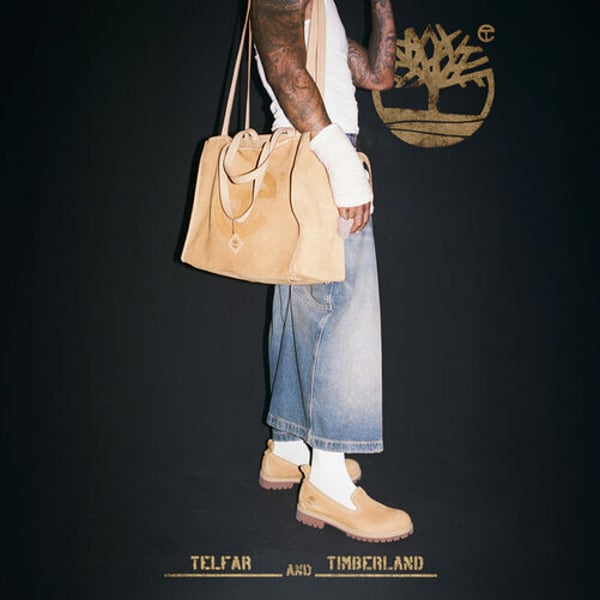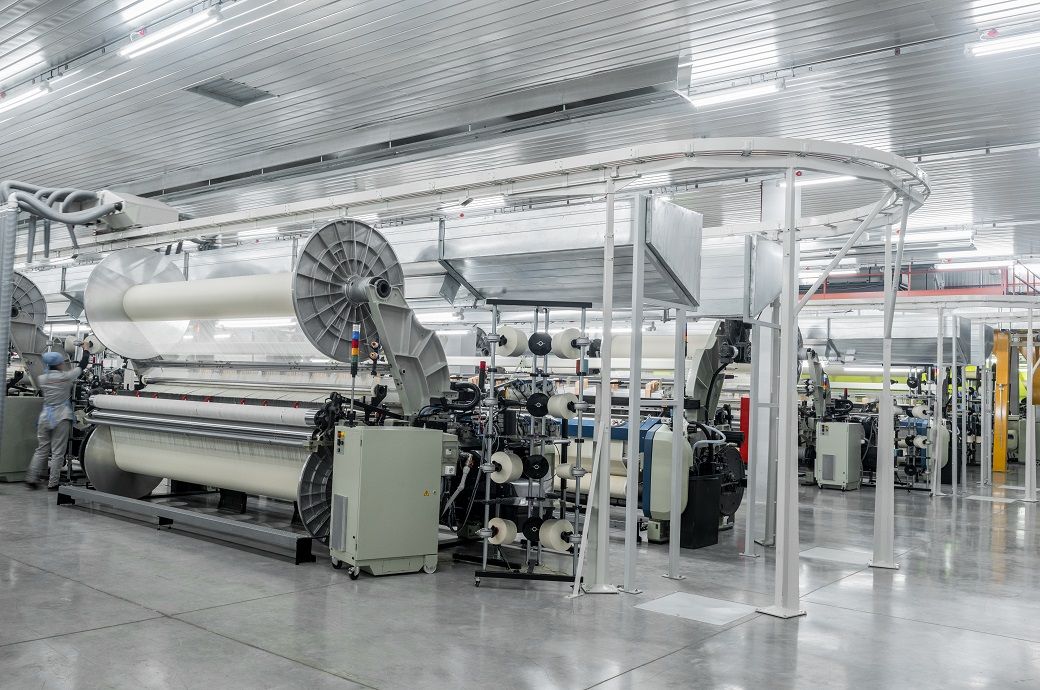Fashion
Timberland and Telfar launch capsule collection

Published
October 4, 2025
Timberland and Telfar have teamed up to launch a capsule collection that reimagines the classic Yellow Boot while expanding into bags.
At the center of the collection is the Timberland x Telfar Tall Pull-On Boot, a 26-inch unstructured style in pebbled nubuck leather, available in wheat and black. Completing the footwear selection is the Mid Pull-On Boot offering an 11-inch version, and the Slip-On Shoe, which reinterprets Timberland’s workwear DNA into a loafer meant to be worn across seasons and occasions.
True to Telfar’s signature, the collaboration also introduces bags. The Timberland x Telfar Shopper, available in three sizes in wheat and black, is crafted from thick nubuck leather with the Telfar logo burned into the front and rubber feet on the base inspired by Timberland’s iconic tread. Lastly, a new silhouette, the Slouchy Bag, mirrors the boots’ relaxed shape, featuring exterior shell pockets, a drawstring closure, and orange nylon interior.
Distribution will be split between the two brands: all wheat bags and all black boots and bags will be exclusive to Telfar, while Timberland will carry the wheat boot and loafer styles.
The collection is now available online, at Telfar’s New York flagship on Broadway, via Timberland stores, and select wholesale partners on October 8.
Copyright © 2025 FashionNetwork.com All rights reserved.
Fashion
Germany’s swimwear trade: Asia-Pacific leads volume, Europe tops value
Fashion
EU, OECD partners pledge more transparency on export finance in energy

The EU’s commitment is part of its continued efforts to advance transparency, accountability and informed policymaking in support of the global energy transition.
The EU, Australia, Norway, Switzerland and the UK have committed to transparency on the export credits they provide in the energy sector.
This is part of EU’s efforts to advance transparency, accountability and informed policymaking backing energy transition.
They have requested the Export Finance for Future to report on all their transactions within the scope of the Arrangement on Export Credits.
“We intend to be transparent on the officially supported export credits we provide to transactions in the energy sector. This sector is vital for all economies and public export credits play an important role worldwide, by creating access to reliable, affordable and sustainable energy,” the EU agreed together with Australia, Norway, Switzerland and the United Kingdom.
“We have therefore requested the Export Finance for Future (E3F) coalition to report on all our related transactions within the scope of the Arrangement on Export Credits, with a breakdown by type of energy,” they said.
The E3F report lays out all relevant transactions notified to the OECD secretariat between 2015 and 2024 and shows a clear phase down of fossil fuel support, with in parallel a huge scale-up of renewable energy financing. Transactions are broken down by year, recipient country and energy sector. The intention is to report annually from now on, an official release from the EU said.
The EU participates in the OECD-hosted Arrangement on Officially Supported Export Credits, which seeks to foster a level playing field for this type of government-provided financial instrument. Climate-related provisions within the arrangement have been expanding since 2015, creating financial incentives for climate-friendly export credits and banning the financing of coal-fired power plants.
Launched in 2021, the E3F is a coalition of export credit agencies is committed to aligning their export finance policies with climate objectives by increasing support for sustainable projects, phasing out public finance for unabated fossil fuels, and publishing an annual transparency report on their export-finance transactions.
In 2024, the EU proposed to create a ‘coalition of the willing’ transparency exercise for the voluntary disclosure of energy-related transactions.
Fibre2Fashion News Desk (DS)
Fashion
India’s Industrial output rises 4% as economy shows strong resilience

Dun & Bradstreet estimates IIP growth to have moderated to 3.5 per cent in October compared with 4 per cent in September and 4.1 per cent in August due to weaker non-durable consumer output, inventory overhang, and subdued external demand. Even so, the combination of strong domestic demand, prudent monetary policy, and rising trade diversification continues to shield the Indian economy from global turbulence.
India’s economy remains resilient, with IIP up 4 per cent in September 2025 despite global slowdown pressures, according to Dun & Bradstreet.
It expects moderation to 3.5 per cent in October, while inflation eases sharply, with CPI projected at 0.6 per cent and WPI turning negative.
Firm domestic demand, rising gold reserves, and stronger external inflows continue to support India’s growth outlook.
CPI inflation eased sharply to 1.5 per cent in September—its lowest level since June 2017—and is projected to fall further to 0.6 per cent in October, driven by subdued food prices and GST rationalisation effects. WPI inflation is estimated to turn negative at minus 1 per cent in October, from 0.1 per cent in September and 0.5 per cent in August. These indicators, also highlighted in the table, point to cooling input costs and improving purchasing power. While this may support short-term demand, Dun & Bradstreet notes that post-festive normalisation and muted wholesale pricing power may lead businesses to adjust production and delay restocking, Dun & Bradstreet said in a press release.
Financial conditions remained broadly stable. The 10-year G-Sec yield is estimated to have eased to 6.5 per cent in October, while the 91-day T-Bill yield held steady at 5.5 per cent for the third straight month. The repo rate remained unchanged at 5.5 per cent as the RBI kept a neutral stance, citing resilient growth and subdued inflation. Liquidity fluctuated due to festive and GST outflows, prompting the central bank to conduct multiple repo and reverse repo auctions. Bank credit growth is estimated to moderate to 9.8 per cent in October from 10.4 per cent in September. These trends are captured in the table, which shows steady short-term yields and modest credit softening.
India’s external buffers strengthened further, particularly gold reserves. The RBI’s gold holdings stood at $97.5 billion at the end of September, accounting for 13.9 per cent of total forex reserves—the highest share in more than two decades. The RBI also declared a record redemption price of ₹12,704 per unit for Sovereign Gold Bonds issued in 2020, reflecting the rise in global gold prices. The rupee averaged ₹88.6 per USD in October, with expectations of mild appreciation to ₹88 in November, consistent with the table’s exchange rate forecasts.
India’s external sector displayed resilience alongside emerging pressures. The central bank’s amendment to the Foreign Exchange Management Regulations now permits rupee-denominated lending to Sri Lanka, Nepal, and Bhutan, promoting greater regional financial integration. India drew foreign investment inflows of $7.3 billion in Q1 FY26, comprising $2.5 billion in FII inflows and $1.6 billion in portfolio investment, reflecting global investor confidence in India’s economic fundamentals.
“India’s economic trajectory continues to defy global headwinds, anchored by resilient domestic fundamentals and a benign inflation outlook. Industrial output remains robust, though signs of post-festive normalisation and inventory adjustments suggest a near-term moderation,” said Arun Singh, global chief economist, Dun & Bradstreet.
“The RBI’s neutral stance and stable yields reflect confidence in macroeconomic stability, while strategic trade diversification and rising gold reserves underscore India’s proactive positioning as a resilient and forward-looking economy amid global uncertainty. As advanced economies grapple with fiscal fragility, India’s calibrated policy mix and expanding external partnerships offer a compelling narrative of resilience and opportunity in a fragmented global landscape,” added Singh.
Fibre2Fashion News Desk (SG)
-

 Tech1 week ago
Tech1 week agoFrom waste to asset: Turning ethanol production CO₂ into jet fuel
-

 Tech4 days ago
Tech4 days agoNew carbon capture method uses water and pressure to remove CO₂ from emissions at half current costs
-

 Politics5 days ago
Politics5 days agoBritish-Pakistani honoured for transforming UK halal meat industry
-

 Sports3 days ago
Sports3 days agoTexas A&M officer scolds South Carolina wide receiver after touchdown; department speaks out
-

 Business4 days ago
Business4 days agoThese 9 Common Money Mistakes Are Eating Your Income
-

 Business4 days ago
Business4 days agoWhat’s behind Rachel Reeves’s hokey cokey on income tax rises?
-

 Tech1 week ago
Tech1 week agoSecurity flaws in portable genetic sequencers risk leaking private DNA data
-

 Fashion6 days ago
Fashion6 days agoAdidas & Patrick Mahomes expand NIL programme with Texas Tech athletes


















